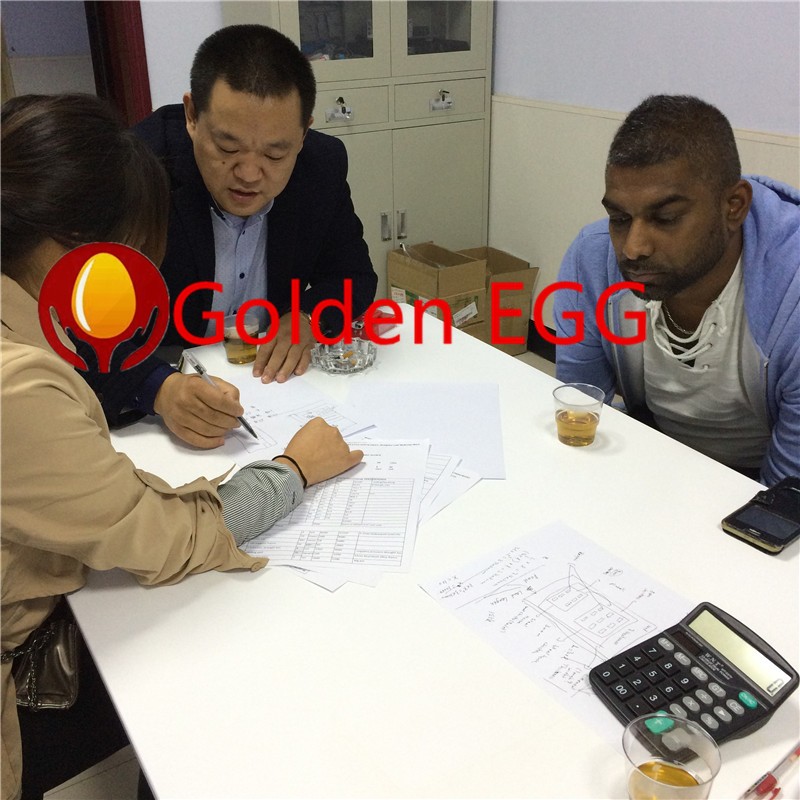Lighting is an important environmental factor that affects chickens. Proper lighting can stimulate the increase of sex hormone secretion in hens, increase the activity of the ovary and fallopian tubes, accelerate the formation of eggs and discharge, and the development of fallopian tubes, thereby increasing the hen production capacity.
Light intensity
Excessive light can make the chicken restless, causing cramps, rectal prolapse, and nervousness. The sudden increase in light production of egg-laying birds, but the eggshell quality decreased, broken eggs, misshapen eggs increased, and the sudden death rate increased. The light level required for chickens to eat is generally low, and chickens can reach the trough and eat at less than 2.7 lux. However, in order to stimulate the pituitary and increase the production of eggs, it requires 4 times the illuminance, that is, 3 watts of light intensity per square meter is appropriate.

Light management at each growth stage
Baby bird:
Both chicks and grower chickens are in a growing period. Light management at this stage should promote the healthy growth of chicks and high survival rate, but prevent hens from reaching sexual maturity prematurely. Chicks can grow well under low light and weak light, but in order to make them as early as possible and have more intake and drinking water, the light time can reach 12 hours per day in the first week, and the light intensity can be larger. It is better to use 20 lux. That is, there is a light source of 5 watts per square meter. As the age increases, the light intensity gradually decreases to 5 lux. This saves electricity, and the chicks are quieter and can prevent lice from happening.
Grower period
Grower period (7-20 weeks). The principle of light management during the breeding period is: the light time should be short, and it should not be extended gradually, and the light intensity should be weak. The main purpose of light management is to control the growth and development and reach sexual maturity at the appropriate age. Premature sexual maturity not only results in a small egg weight at the time of production, but also due to inadequate body maturation. Production is suspended shortly after the start of production and cannot be followed by stable production and high yield. From the young chick stage to 10 weeks of age, the length of light does not have much influence on sexual maturation, but 10-18 weeks is the critical period. The duration of the light in this period of time must be short and must not be extended. The chickens reared in the closed chicken house are completely exposed to artificial light, and the time and intensity of light can be controlled. Therefore, it can be accurately implemented according to the prescribed system. The chicks were exposed to light for 23 hours per day within 1 week of age, from 2 weeks of age to 18-20 weeks of age, and kept 8 hours of light per day. It is more difficult to control the light in the open house. The effect of light is mainly in the late growth stage, and the chicks hatched in the spring stage are in the stage of gradually shortening the sunshine. Therefore, even in natural light conditions, the hen will not be made. To mature prematurely, it is important not to add artificial light during the breeding phase. If the bird is brooded in the fall, it can use natural light for the first 10 weeks and the natural light for the longest period of 10 - 20 weeks after 10 weeks of age. If the natural illumination time for this period is 12 hours, then the natural lighting is less than 12 hours. Each week, supplemented with lights, make up for 12 hours. This avoids the possibility of prolonged exposure to light during the later stages of growth, as well as premature sexual maturation and premature egg laying in the young hens.
Egg production period:
The principle of light management during the production of eggs is to allow the hens to start production at the right time and reach a peak, giving full play to their egg production potential. Therefore, the illumination time should be long and should not be shortened gradually. The light intensity can not be reduced. Egg production is generally done with increasing or constant light, but not less than 14-17 hours of light per day. Laying hens are very sensitive to light and can only increase or maintain and cannot be reduced. Generally from the beginning of the 21-week-old , the chicken light 13--14 hours a day, then every week for 30 minutes, has been increased to 17 hours so as to maintain the peak production, light illumination with 10 lux is appropriate.
Supplemental light method
When the supplemental light method supplements lighting, the power supply must be reasonably stable, and the bulb must be evenly distributed, and there must be no dark area. The distance between the bulbs is 3m, the lamp is 2m from the ground, and the distance from the wall of the lamp bulb is 1.5m. The two rows of light bulbs are staggered, and it is advisable to use about 3 watts per square meter of floor space. The artificial lighting time that needs to be supplemented can be fully replenished by half before dawn and after sunset. The lighting timer can be installed, or the automatic light controller can control the daily light switch time.























